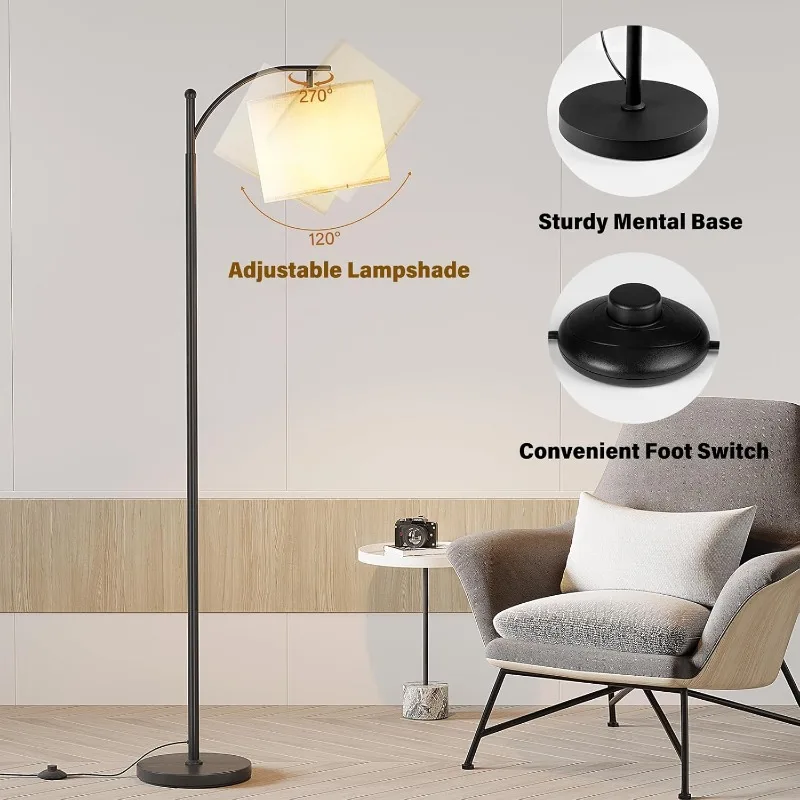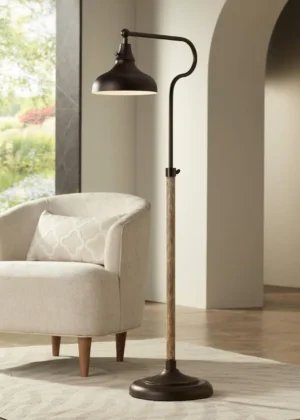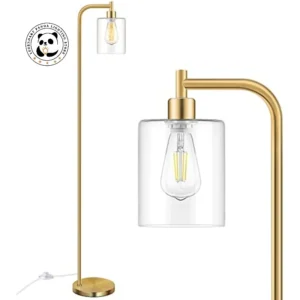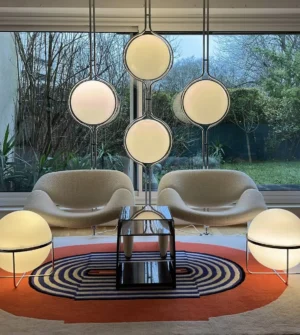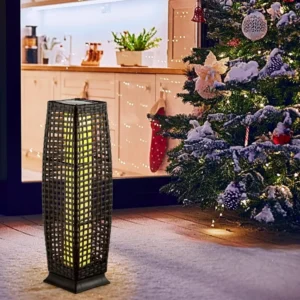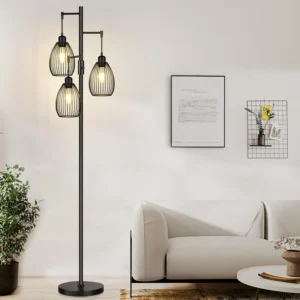Introduction: Why Quality Lighting Matters for Reading
Poor lighting is more than just an inconvenience when reading—it’s a direct path to eye strain, headaches, and premature fatigue that can turn an enjoyable activity into an uncomfortable chore. While general room lighting serves its purpose, it often falls short for reading, creating shadows or inadequate illumination where you need it most.
A proper reading lamp serves several crucial functions that general lighting simply can’t match:
- Reduces eye strain by providing focused, adequate brightness directly on your reading material
- Enhances concentration by eliminating shadows and providing consistent illumination
- Improves reading comprehension through better contrast and visibility
- Creates a more comfortable experience that allows for longer reading sessions
The “best” reading lamp isn’t a one-size-fits-all solution—it depends on your specific reading habits, environment, and personal needs. The perfect lamp combines proper light quality, adjustability, and ergonomic design that works with your unique reading environment. Specialized lamps for reading corners provide targeted illumination that general lighting simply can’t match.
Eye health professionals consistently recommend dedicated reading lights that provide proper illumination without glare or shadows—a simple change that can make a dramatic difference in your reading comfort and eye health.
Understanding Different Types of Reading Lamps
Different reading environments and habits call for different lighting solutions. The lamp that works perfectly beside your bed might not be ideal for your desk or living room reading nook. By understanding the strengths and limitations of each lamp type, you can better match your lighting to your specific needs.
As you explore the options below, consider where and how you typically read, how much space you have available, and whether you need a lamp that serves multiple purposes beyond reading.
Let’s examine the five main categories of reading lamps, each designed to excel in specific reading scenarios:
Desk Lamps: Precision Lighting for Close Work
Desk lamps are specialized task lights designed to provide focused illumination for detailed work in a contained area. The best reading-oriented desk lamps feature adjustable arms and heads that allow you to direct light precisely where needed without creating glare on your reading material.
Ideal for study, paperwork, and any reading that requires concentrated attention, desk lamps excel in environments where you need bright, controlled light in a specific area. Look for models with stable bases, flexible arms, and shades that direct light downward rather than outward.
Pros:
– Highly directable for precise illumination
– Compact footprint that preserves desk space
– Ideal for detailed tasks requiring focused concentration
– Often include special features like magnification or extra brightness settings
Cons:
– Limited range of illumination
– Fixed to one location unless moved
– Not ideal for casual reading in relaxed positions
Common desk lamp styles that excel for reading include architect lamps with articulated arms, LED task lamps with adjustable necks, and swing-arm designs that can extend outward when needed and fold away when not in use.
Floor Lamps: Versatile Lighting for Reading Nooks
Floor lamps bring superior flexibility to reading environments, particularly in comfortable seating areas where table space is limited or unavailable. Their freestanding design allows placement exactly where needed without requiring nearby furniture.
For reading purposes, arc lamps specifically designed for reading nooks offer outstanding versatility. Their extending arms can position light directly over your reading material while the base remains safely out of the way. This design prevents shadows caused by your body blocking the light source—a common problem with traditional lighting.
Pros:
– Space-efficient base that requires minimal floor area
– Combines ambient lighting with focused task lighting
– Adjustable height and reach accommodate different seating arrangements
– Can serve multiple purposes in a room beyond reading
Cons:
– May be less precisely directable for very detailed work
– Larger overall footprint than compact desk models
– Potential tipping hazard if bumped (quality models address this)
Adjustable arc lamps designed for reading represent the gold standard for living room and seating area reading. Their curved arms extend over chairs and sofas, delivering light from above and eliminating shadows. Look for models with adjustable heads, dimmable settings, and stable weighted bases.
Table Lamps: Bedside and End Table Reading Solutions
Table lamps bridge the gap between ambient room lighting and dedicated reading illumination, making them versatile additions to bedside tables and end tables near reading areas. While not all table lamps are created equal for reading purposes, those designed with reading in mind offer specific features that enhance text visibility.
Table lamps excel beside beds, on end tables near seating, or in spaces where you want both decorative lighting and functional reading illumination. The best reading-oriented table lamps feature adjustable heads or shades that direct light toward your book rather than simply illuminating the general area.
Pros:
– Dual functionality as both ambient and task lighting
– Decorative element that enhances room aesthetics
– Convenient placement next to typical reading spots
– Available in countless styles to match any decor
Cons:
– Often less adjustable than dedicated reading lamps
– May cast shadows without proper shade design
– Limited reach compared to floor or adjustable models
Reading-friendly table lamps typically feature shades that direct light downward, swivel necks that adjust the light angle, and bases stable enough to prevent tipping when adjusting. Drum shades that extend wider than the base help distribute light more effectively for reading.
Clip-On Lamps: Portable Solutions for Flexible Reading
Clip-on lamps offer ultimate portability and versatility for readers who change positions frequently or read in multiple locations. These compact lights attach directly to your book, e-reader, headboard, or any available edge, bringing focused illumination exactly where needed.
Ideal for travel, bedtime reading, or situations where space is limited, clip-on lamps excel where permanent lighting solutions aren’t practical. They’re particularly valuable for readers who share spaces with others, as they provide personal illumination without disturbing companions.
Pros:
– Extremely portable and compact
– Attach directly to reading materials or nearby surfaces
– Adjustable heads direct light precisely on text
– Ideal for travel or shared spaces
Cons:
– Generally lower brightness than fixed lamps
– Battery models require regular charging/replacement
– Limited coverage area for larger materials
– May not be stable on all attachment surfaces
The best reading clip-on lamps feature flexible necks, evenly distributed LED lighting, rechargeable batteries with long life spans, and clips with protective padding to prevent damage to attachment surfaces.
Wall-Mounted Lamps: Space-Efficient Reading Fixtures
Wall-mounted reading lamps offer a permanent solution that saves valuable table and floor space while providing targeted illumination. Especially valuable in small bedrooms, built-in reading nooks, and spaces where floor or table space is at a premium.
Modern wall-mounted reading lamps—particularly articulated designs with adjustable arms—combine space efficiency with flexibility. Their fixed base installation means no footprint on your floor or furniture, while their adjustable arms extend exactly where light is needed.
Pros:
– Zero footprint on floor or table surfaces
– Clean, built-in aesthetic that reduces clutter
– Adjustable arms position light precisely
– Eliminates risk of knocking over lamps
Cons:
– Permanent installation requires mounting hardware
– Limited mobility once installed
– May require professional installation for electrical wiring
– Potential wall damage when removed
The most reading-friendly wall-mounted lamps feature swing arms that extend outward when in use, adjustable heads that direct light downward, and easy-to-reach switches or dimmers. Hardwired models eliminate cords but require professional installation, while plug-in versions offer simpler setup with visible cords.
Essential Light Quality Features for Reading
While lamp style and design matter, the actual quality of light produced is the single most critical factor in determining reading comfort. Poor light quality forces your eyes to work harder, leading to strain, fatigue, and reduced reading enjoyment regardless of lamp style.
The light from your reading lamp directly impacts how clearly you can see text, how accurately colors appear, and how comfortable your eyes remain during extended reading sessions. Even the most perfectly positioned and aesthetically pleasing lamp will cause problems if the light quality is subpar.
Four key aspects of light quality most impact the reading experience:
Color Temperature: Choosing the Right Light Tone
Color temperature refers to the perceived warmth or coolness of light, measured on the Kelvin (K) scale. This often-overlooked feature significantly affects both reading comfort and your body’s natural rhythms.
Different color temperatures create distinctly different reading experiences:
Warm White (2700K-3000K): Creates a cozy, relaxing atmosphere with a slightly yellowish tone. Ideal for leisure reading, especially in evenings. This range minimizes blue light exposure, making it less likely to interfere with natural sleep patterns. Perfect for bedtime reading or creating a relaxing environment.
Neutral White (3500K-4500K): Provides a balanced, natural-feeling light that closely resembles midday sunlight. This middle range offers excellent text contrast without feeling harsh or clinical. Best for general reading in most situations, as it balances comfort with clarity.
Cool White/Daylight (5000K-6500K): Produces a crisp, bluish-white light that maximizes alertness and contrast. Excellent for studying, detailed work, or situations requiring maximum text visibility. However, this range contains more blue light, which can potentially disrupt sleep if used in the evening.
Soft lighting options with adjustable color temperature provide the most versatility, allowing you to match your light tone to your reading purpose and time of day. Many premium reading lamps now offer adjustable color temperature settings, letting you transition from energizing daylight for studying to relaxing warm light for bedtime reading.
Brightness Levels: Finding Your Ideal Illumination
Brightness, measured in lumens, determines how much light your lamp provides. Finding the sweet spot between insufficient light (causing eye strain from squinting) and excessive brightness (causing glare and discomfort) is essential for comfortable reading.
For focused reading tasks, these general guidelines apply:
- 450-550 lumens: Minimum recommended brightness for comfortable reading
- 550-800 lumens: Ideal range for most reading situations
- 800+ lumens: Beneficial for detailed work, small text, or readers with vision challenges
Dimmable arc floor lamps provide optimal flexibility, allowing you to adjust brightness based on ambient light conditions, reading material, and personal comfort. The ability to adjust brightness becomes particularly important as lighting needs change throughout the day or when reading different materials.
You can quickly determine if your current reading light is too dim if you find yourself holding materials closer to your eyes or repositioning them to catch better light. Conversely, if you’re squinting, shading the page with your hand, or experiencing discomfort after brief reading periods, your light may be too bright or causing glare.
Color Rendering: How Accurately Colors Appear
Color Rendering Index (CRI) measures how accurately a light source reveals the true colors of objects compared to natural daylight. While this might seem less important for reading black text on white pages, high CRI lighting improves contrast, reduces eye fatigue, and creates a more natural visual experience.
For reading purposes:
- CRI 80-89: Good color rendering suitable for casual reading
- CRI 90+: Excellent color rendering that enhances contrast and reduces eye strain
- CRI 95+: Superior color accuracy approaching natural daylight
Higher CRI lighting makes text appear clearer and more defined by enhancing the contrast between text and background. This increased contrast allows your eyes to work less hard to distinguish letters, reducing fatigue during extended reading sessions.
The difference becomes particularly noticeable with glossy materials, colored text, illustrations, or when reading for extended periods. Low CRI lighting can make text appear slightly blurry or less distinct, contributing to eye strain even if you can’t immediately identify why reading feels uncomfortable.
Flicker-Free Technology: Preventing Visual Fatigue
Light flicker—rapid fluctuations in light output—can cause significant eye strain even when not consciously perceptible. Imperceptible flicker still affects the brain and visual system, leading to headaches, eye strain, and discomfort during extended reading.
Quality reading lamps eliminate problematic flicker through:
- Advanced LED drivers that deliver consistent current
- AC to DC power conversion that smooths electrical fluctuations
- Higher frequency operation beyond visual perception
While not all product descriptions specify flicker-free technology, higher-quality lamps typically include this feature. You can test for flicker by taking a slow-motion video of your lamp with a smartphone camera—flickering will appear as visible bands or pulsing in the video even if invisible to the naked eye.
Adjustability and Ergonomics for Optimal Reading
The ability to position light exactly where needed fundamentally distinguishes reading lamps from general lighting. Proper adjustability prevents shadows, eliminates glare, and allows customization to different reading positions and materials.
Key adjustability features that enhance the reading experience include:
- Flexible goosenecks and articulated arms: Allow precise positioning to illuminate reading material without creating reflective glare
- Swivel heads and rotating bases: Enable repositioning light direction without moving the entire lamp
- Height adjustments: Accommodate different seating heights and reading positions
- Rotation and tilt mechanisms: Direct light exactly where needed from various angles
Adjustable arc floor lamps provide exceptional flexibility for reading, with arms that can be positioned at various heights and angles. This adaptability is particularly valuable for reading in different positions or sharing a lamp between multiple seating areas.
For optimal reading comfort, proper lamp positioning follows these general principles:
* Position the light source above and slightly behind your shoulder when possible
* Direct light onto the page rather than toward your eyes
* Ensure light covers the entire reading area without creating harsh shadows
* Adjust height and angle to prevent glare on glossy pages or screens
The best reading lamps combine multiple adjustment points to accommodate different reading scenarios, from upright desk reading to relaxed recliner or bedtime reading.
Eye Protection Features Worth Having
Beyond basic light quality, specific features in reading lamps can provide additional protection for eye health during extended reading sessions.
Look for these eye-friendly features when selecting a reading lamp:
- Glare reduction technology: Frosted diffusers, opaque shades with white interiors, or indirect lighting designs that prevent harsh direct light
- Blue light filtering options: Especially valuable for evening reading to minimize sleep disruption
- Even light distribution: Prevents hot spots and shadows that cause eye fatigue from constant pupil adjustment
- Light stability: Consistent illumination without fluctuations or flicker that strains eyes
The benefits of eye-protective features become most apparent during longer reading sessions. While basic lighting may seem adequate for brief reading, proper eye-protective features allow for extended reading without the headaches, dry eyes, or vision fatigue that often cut reading sessions short.
Blue light exposure is particularly important to manage in evening reading. Higher color temperature lights (cooler/bluer) can suppress melatonin production, potentially disrupting sleep patterns. Some advanced reading lamps include specific blue light reduction modes for evening use, allowing you to enjoy bedtime reading without affecting sleep quality.
Energy Efficiency and Bulb Technology
Modern reading lamps have overwhelmingly adopted LED technology, which offers significant advantages over older lighting technologies for both performance and efficiency.
LED lighting provides several specific benefits for reading applications:
- Energy efficiency: Uses up to 85% less electricity than incandescent bulbs for equivalent brightness
- Extended lifespan: Quality LED bulbs last 20,000+ hours compared to 1,000-2,000 hours for incandescent options
- Minimal heat output: Remains cool during operation, eliminating burn risk even during bulb adjustment
- Instant illumination: Reaches full brightness immediately without warm-up period
- Consistent light quality: Maintains color temperature and brightness throughout lifespan
LED arc floor lamps combine these energy-efficient benefits with designs optimized for reading comfort. The long lifespan of LED technology makes these lamps particularly cost-effective despite their higher initial investment compared to basic lighting options.
From a practical perspective, LED reading lamps typically require no bulb replacement for 10+ years of normal use. This maintenance-free operation, combined with significantly lower electricity consumption, makes them the clear choice for reading applications where light quality and consistency are paramount.
Smart Controls and Convenience Features
Advanced control features transform a good reading lamp into an exceptional one by allowing precise customization of your reading environment with minimal effort.
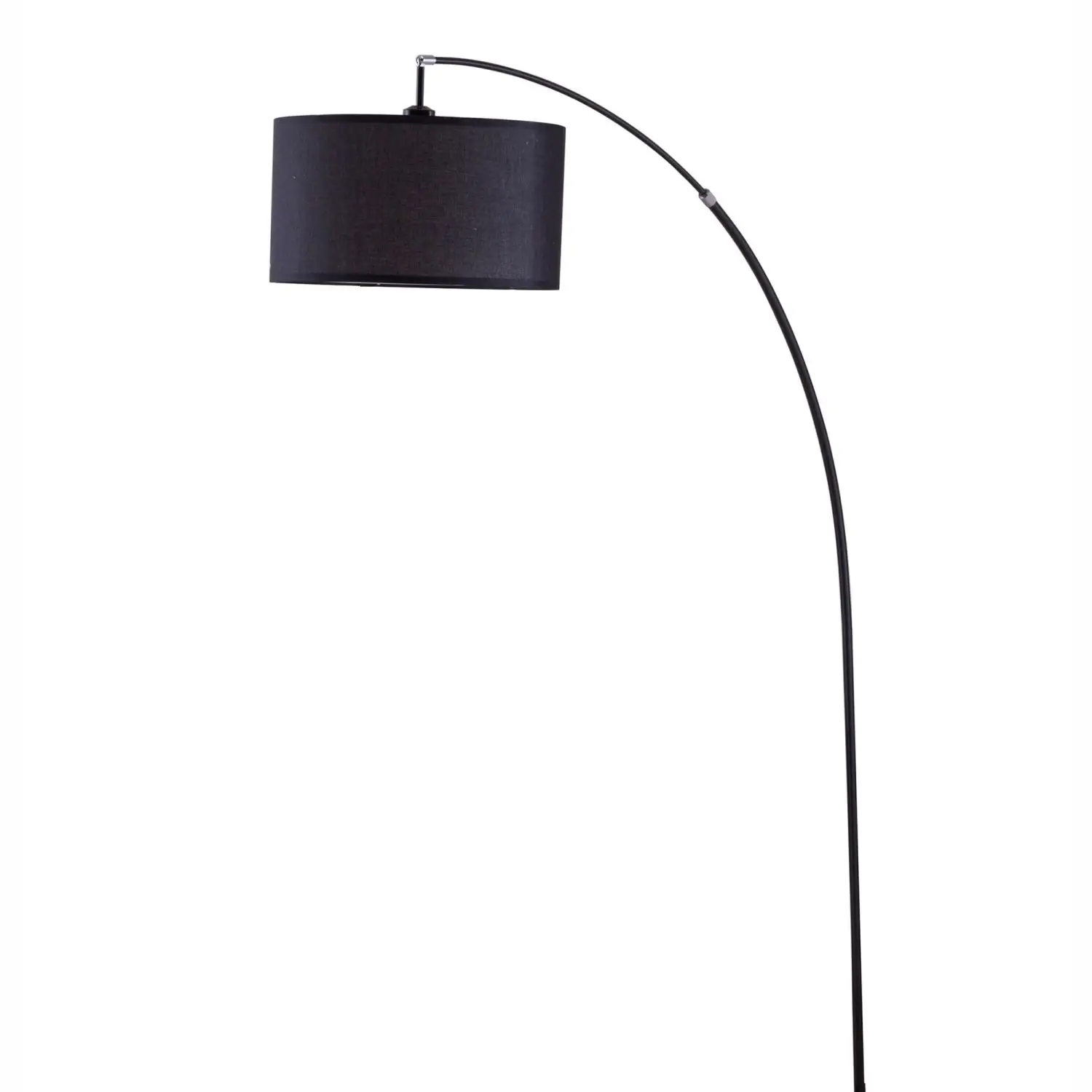
Valuable control features to consider include:
- Stepless dimming: Allows precise brightness adjustment rather than limited preset levels
- Touch controls: Enable easy adjustments without fumbling for switches
- Memory functions: Automatically restore preferred settings when turned on
- USB charging ports: Conveniently power e-readers, tablets or phones while reading
- Remote controls: Allow adjustments without leaving your comfortable reading position
- Timer functions: Automatically turn off after predetermined reading time
Accessibility of controls significantly impacts user experience—particularly for bedside reading lamps where fumbling for switches in the dark can be frustrating. Look for controls positioned within easy reach from normal reading positions, with intuitive operation that doesn’t require looking away from your book.
Memory functions provide particular convenience for readers with established preferences, eliminating the need to readjust settings each time. This feature proves especially valuable for shared reading lamps, allowing multiple users to quickly restore their individual preferences.
Choosing the Right Lamp for Your Reading Environment
Finding your perfect reading lamp requires a thoughtful assessment of your specific reading habits, environment, and preferences. One reader’s ideal lamp may be completely unsuitable for another based on differences in reading positions, materials, and environments.
Consider these factors when evaluating your reading lamp needs:
- Reading duration: Longer sessions demand higher quality lighting with better eye protection
- Reading positions: Different postures require different lamp types and adjustment ranges
- Reading materials: E-readers, glossy magazines, and traditional books have different lighting requirements
- Ambient light conditions: Rooms with varying natural light need lamps with adjustable brightness
- Shared spaces: Reading near others may require focused light that won’t disturb companions
- Space constraints: Available floor, table, or wall space influences which lamp types are practical
- Aesthetic preferences: The lamp should complement your space when not in use
Taking time to assess these factors before shopping helps narrow your choices to lamps that will truly meet your needs rather than creating new problems or limitations.
Bedside Reading: Comfort Without Disturbing Partners
Bedside reading presents unique challenges: you need sufficient light for comfortable reading without disturbing a sleeping partner or interfering with sleep quality for either of you.
The best reading lamps for bedrooms address these challenges through:
- Focused beams with minimal light spill: Direct light only where needed
- Warm color temperature: 2700K-3000K range minimizes blue light that can disrupt sleep
- Accessible and quiet controls: Allow adjustments without disturbing partners
- Adjustable positioning: Accommodates different reading positions in bed
- Dimmable settings: Allow precise brightness control based on reading material
For shared bedrooms, consider directional wall-mounted lamps that can be precisely aimed at your reading material with minimal overflow onto your partner’s side. Alternatively, clip-on book lights provide highly focused illumination that affects only your immediate reading area.
Optimal positioning places the light source above and slightly behind your shoulder, illuminating your book without shining toward your partner or creating glare on glossy pages.
Desk and Study Reading: Focus and Productivity
Reading for study, research, or detailed work demands lighting that enhances focus and reduces eye fatigue during extended concentration periods.
For optimal desk reading environments, prioritize:
- Cool to neutral color temperature: 4000K-5000K range enhances alertness and focus
- Higher brightness levels: 600-800+ lumens provides adequate illumination for detailed text
- Precise adjustability: Allows repositioning for different materials and tasks
- Stable base with minimal footprint: Preserves valuable desk space while preventing movement
- Glare control on screens: Positioned to prevent reflections on computer monitors
Articulated desk lamps with multiple adjustment points provide the greatest versatility for detailed work, allowing precise positioning as your tasks change throughout the day. Position the lamp to the side opposite your writing hand to prevent shadows when taking notes.
For students or professionals frequently referencing multiple documents, consider supplementing a focused task lamp with moderate ambient lighting to reduce contrast between the illuminated work area and surrounding space.
Living Room Reading: Comfort and Aesthetics
Living room reading typically balances comfort with aesthetic considerations, as the lamp becomes part of your overall decor when not in use for reading.
The best floor lamps for focused reading in living spaces provide:
- Adjustable positioning: Serves different seating arrangements as needed
- Balance of form and function: Attractive appearance with effective reading illumination
- Harmonious design: Complements existing decor when not actively used for reading
- Versatility: Works for both casual browsing and focused reading sessions
Floor lamps that provide optimal reading light for living areas typically feature adjustable heads or arms that can be positioned over seating without dominating the space. Arc floor lamps excel in this environment, with bases that can be placed behind furniture while their extending arms deliver light precisely where needed.
For living rooms serving multiple purposes, consider lamps with adjustable brightness and color temperature settings that can transition between ambient lighting for socializing and focused illumination for reading.
Adjustable Arc Floor Lamp, Bronze Arc Floor Lamp
Price range: $440.95 through $558.52 Select options This product has multiple variants. The options may be chosen on the product pageBrass Arc Floor Lamp, Contemporary Arc Floor Lamp, LED Arc Floor Lamp
Price range: $490.72 through $522.04 Select options This product has multiple variants. The options may be chosen on the product pageChrome Arc Floor Lamp, LED Arc Floor Lamp
Price range: $304.95 through $1,210.40 Select options This product has multiple variants. The options may be chosen on the product pageLED Arc Floor Lamp, Rattan Arc Floor Lamp
$313.58 Select options This product has multiple variants. The options may be chosen on the product page3 Light Arc Floor Lamp, Dimmable Arc Floor Lamp
Price range: $162.86 through $246.50 Select options This product has multiple variants. The options may be chosen on the product pageLED Arc Floor Lamp, Retro Arc Lamp
$1,175.07 Select options This product has multiple variants. The options may be chosen on the product page
Reading with Vision Challenges
Readers with vision impairments or eye conditions require specialized lighting solutions that maximize visibility while minimizing strain.
For those with vision challenges, prioritize these features:
- Higher brightness levels: 800+ lumens provides enhanced illumination for difficult-to-see text
- Superior color rendering: 90+ CRI improves contrast and text definition
- Daylight color temperature: 5000K-6500K range maximizes visibility and clarity
- Maximum adjustability: Allows precise positioning at the optimal distance and angle
- Even light distribution: Eliminates shadows and hot spots that interfere with visibility
Consider task lamps with built-in magnification features for detailed reading, or models specifically designed for low vision conditions with extra-bright, high-CRI lighting. Position lamps to eliminate glare on reading surfaces, as reflections can be particularly problematic for those with vision challenges.
For progressive lenses wearers, adjustable-height lamps allow positioning light at the perfect angle for each portion of multifocal lenses, eliminating the need to tilt the head to find the “sweet spot” of the lens.
Optimizing Your Reading Light Setup
Even the perfect lamp requires proper setup to deliver its full benefits. These practical steps help create an optimal reading environment:
Balance ambient and task lighting: Complement your reading lamp with moderate ambient light to reduce harsh contrast between illuminated materials and surroundings
Eliminate shadows on reading materials: Position the lamp so your hand or body doesn’t block light when reading—typically from above and slightly behind
Test for glare: Check for reflections or bright spots on glossy materials by looking at your reading surface from different angles
Adjust throughout the day: Increase brightness as natural light diminishes to maintain consistent illumination
Create proper contrast: Ensure adequate difference between text and background without excessive brightness that causes glare
Consider distance and angle: Position light source approximately 15-18 inches from reading material at an angle that prevents direct reflection
Test for comfort: If you notice squinting, leaning forward, or repositioning materials frequently, adjust your lighting accordingly
The ideal setup creates even illumination across your entire reading material without creating shadows, glare, or excessive brightness that causes discomfort.
Common Reading Lamp Mistakes to Avoid
Even high-quality lamps can fail to provide comfortable reading experiences when improperly selected or positioned. These common mistakes often lead to unnecessary eye strain:
Insufficient brightness: Using too-dim lighting that forces eye strain and leaning closer to the material
Solution: Choose lamps with at least 450+ lumens output for readingExcessive brightness/glare: Creating harsh, direct light that causes discomfort and reflection
Solution: Use diffused lighting or position directional light at angles that prevent direct reflectionPoor lamp positioning: Placing lights that create shadows from your hands or body
Solution: Position light source from above and slightly behind rather than directly in frontInconsistent lighting across materials: Creating bright spots and shadows that force constant eye adjustment
Solution: Choose lamps with even light distribution or proper diffusionWrong color temperature for the activity: Using energizing cool light for relaxing bedtime reading
Solution: Match color temperature to the purpose—warmer for relaxation, cooler for focusRelying solely on ambient lighting: Using only ceiling or general room lighting for reading
Solution: Supplement with dedicated task lighting positioned specifically for reading
Many reading comfort issues can be solved through simple adjustments to existing lamps—changing height, angle, or position often dramatically improves the reading experience without requiring new equipment.
Investing in Quality: Long-term Benefits of a Good Reading Lamp
While budget options might seem appealing initially, investing in a quality reading lamp pays dividends through enhanced reading enjoyment and eye health protection over many years of use.
Quality reading lamps deliver substantial long-term benefits:
- Prevention of eye strain and related health issues: Quality lighting reduces headaches, fatigue, and potential long-term vision concerns
- Enhanced reading enjoyment and duration: Comfortable lighting allows longer, more pleasant reading sessions
- Energy savings over the lamp’s lifetime: Efficient LED technology with quality components uses less electricity for better illumination
- Versatility across different scenarios: Premium adjustability features adapt to various reading environments and materials
- Durability and reliability: Quality construction ensures consistent performance without flickering, dimming, or failure
Interior Ivy’s curated collection focuses on reading lamps that balance form and function—pieces that look beautiful in your space while providing the specialized lighting features that enhance the reading experience.
When evaluating reading lamp quality, look beyond aesthetics to examine:
* Construction materials and weight (ensuring stability)
* Smoothness and durability of adjustment mechanisms
* Quality of light diffusion and distribution
* Range and precision of brightness controls
* Warranty coverage that reflects manufacturer confidence
The right reading lamp transforms reading from an activity you enjoy despite lighting challenges to one enhanced by lighting that disappears from consciousness—allowing complete focus on the material rather than discomfort or limitations.

